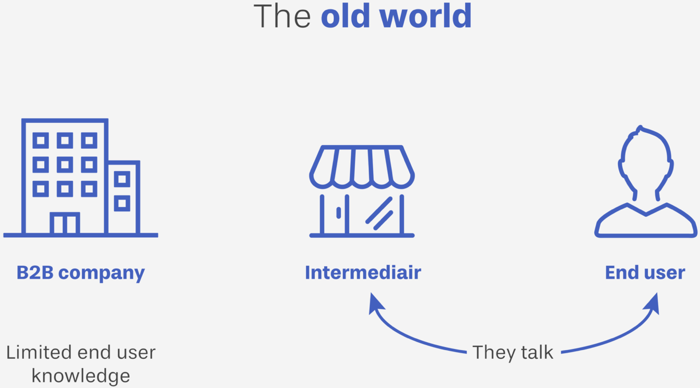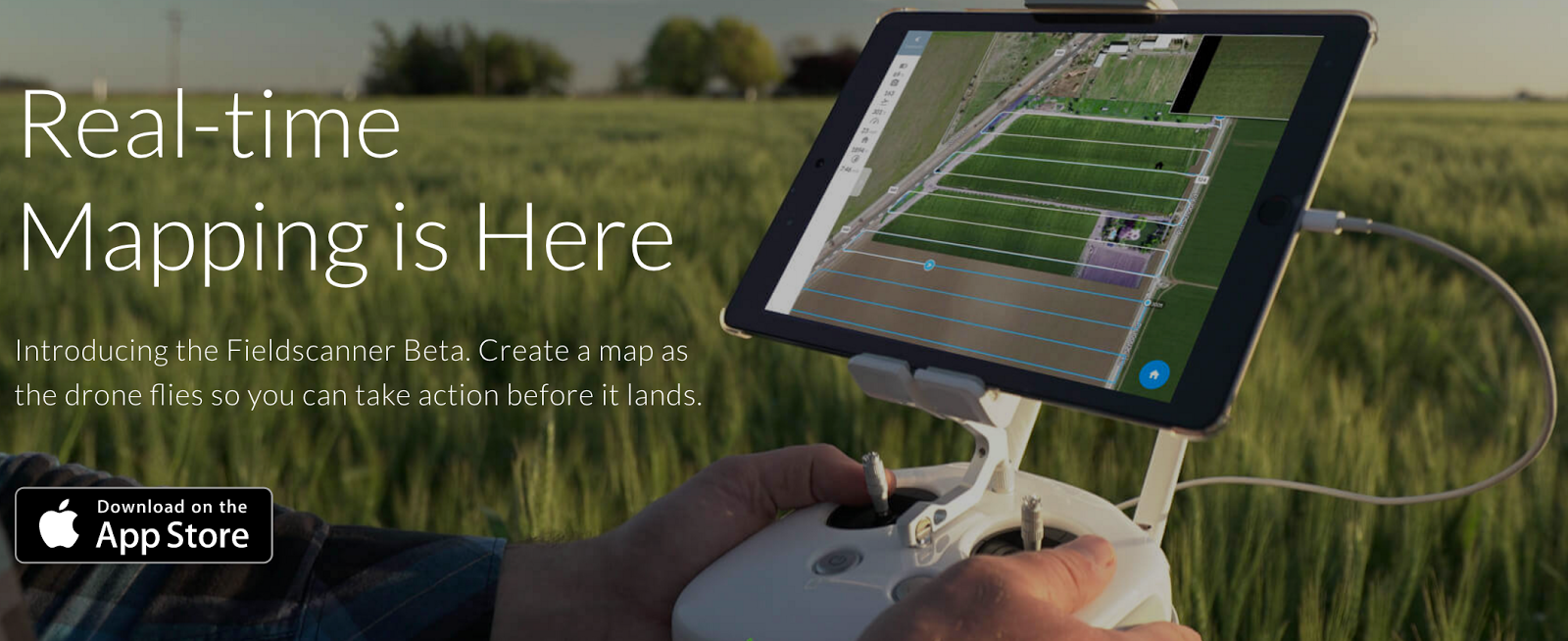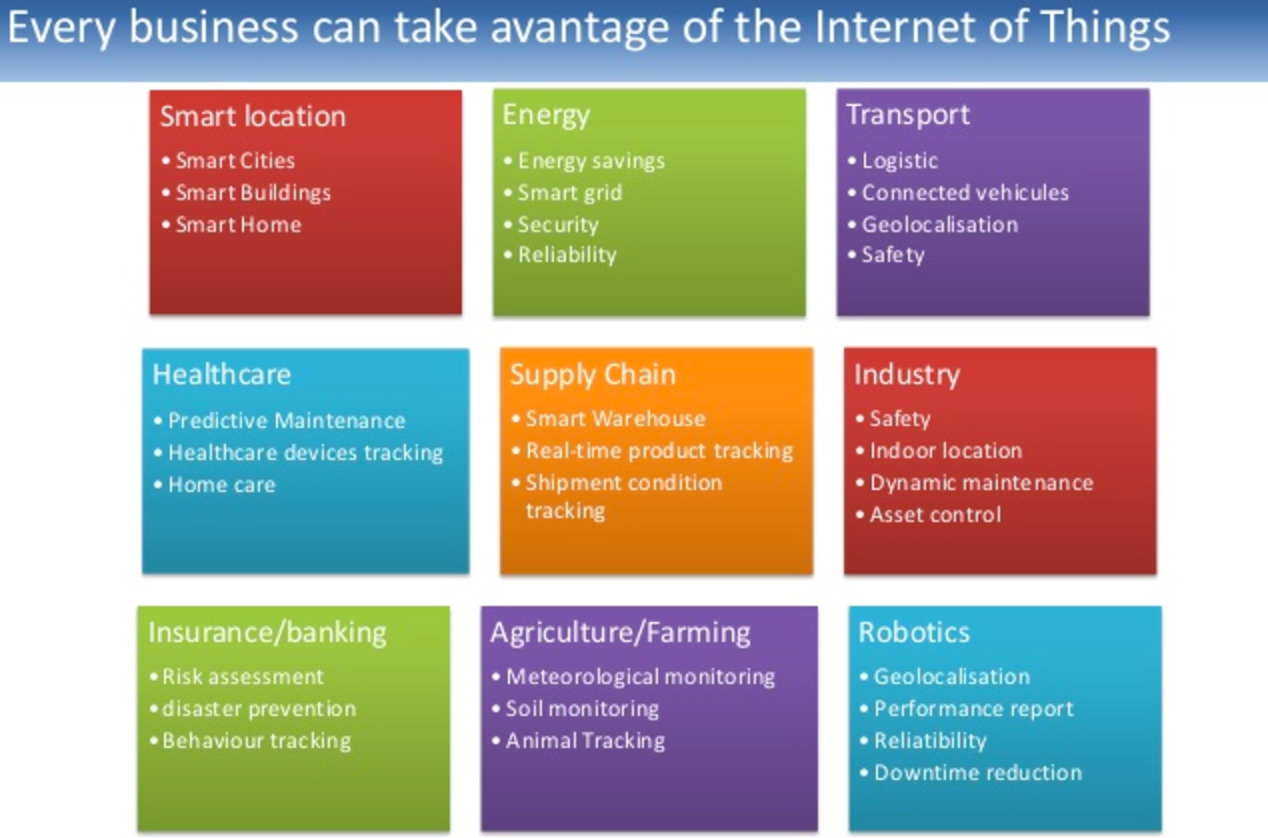How B2B Subscription-Based IoT Businesses Are Changing The World
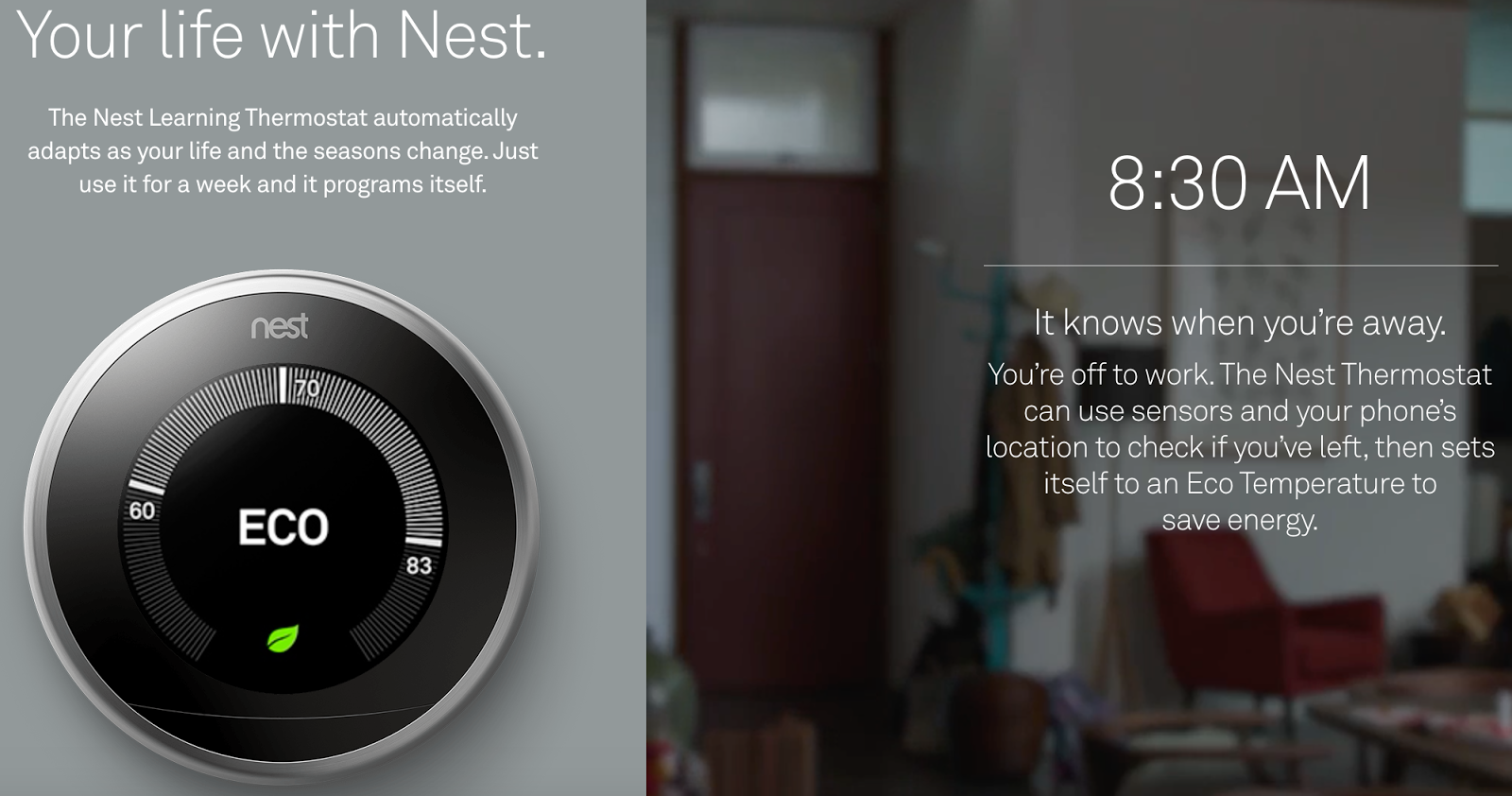
We’ve been hearing hype about the Internet of Things (IoT) for a while, but now we’re at a time where it is becoming a reality. Many are calling IoT the fourth Industrial Revolution; the other revolutions brought us factories, the steam engine, and the internet.
At its most basic definition, Internet of Things is “a network of internet-connected objects able to collect and exchange data,” according to Business Insider. You’re probably most familiar with IoT consumer products such as Amazon Echo, wearable technologies like Fitbit, and smart home products such as Nest.
A McKinsey Quarterly article points out, “while the consumer’s adoption of fitness bands and connected household appliances might generate more media buzz, the potential for business usage is much greater.”
Global IoT spending is predicted to reach $1.29 trillion in 2020. According to the McKinsey Quarterly piece, “business-to-business applications will account for nearly 70 percent of the value that we estimate will flow from IoT in the next ten years…nearly $5 trillion would be generated almost exclusively in B2B settings.”
Here at Chargify, we’ve been seeing an increase in B2B IoT-related subscription businesses and we’re excited about the many possibilities for IoT B2B subscription use cases. Some B2B IoT companies are finding ways to offer subscription services, but in other instances B2B subscription-based businesses are implementing IoT to strengthen their product and offerings. In today’s post we’ll cover:
- Why the subscription business model is the perfect fit for B2B IoT companies, and how new and old companies are quickly adapting.
- The benefits and efficiencies that IoT companies are creating across various industries around the globe.
Why IoT + Subscription Business Models = Success
“The most disruptive but exciting possibility offered by the Internet of Things is a fundamental shift in business models away from product sales to service sales,” according to an article by Regalix.
In our blog post The Future Is XaaS: What you need to know about Everything-as-a-Service, we discussed how the subscription economy is growing and changing buying patterns, leading us to a point where anything can be sold as a service.
With IoT, devices of all kinds are moving online and connecting. The devices are harvesting an incredible amount of data, and it makes sense to offer services around this data. IoT companies which only create and sell devices limit themselves with a one-time revenue. Moving to a recurring revenue model helps B2B IoT companies create sustainable businesses.
Srinivasa Moorthy goes further and says recurring revenue is the only way IoT companies will be successful: “IoT will be successful only if the business model is subscription based or fits into a solution which has a steady periodic revenue stream.”
To help illustrate how an Internet of Things subscription model can work, Strategy of Things Senior Partner Benson Chan gives the following explanation:
“Take the example of a sensor-based system that detects machine wear and proactively alerts the operator of the need for maintenance before a critical part wears out.
- It could be sold as a hardware and software product.
- It could also be sold ‘as a service’ with subscription fees charged on a monthly or periodic basis over a period of time.
- The vendor can also offer the hardware and software as a product sale, but some features, such as monitoring or other key functionality enabled in the software, on a subscription basis.”
Some IoT companies are piggybacking off their B2C IoT success to create B2B opportunities and markets. Nest is a perfect example.
The Nest Learning Thermostat is a B2C IoT product that uses sensors to program itself based on your daily activities, though it can also be controlled remotely via the Nest app on a variety of devices.
The sensors and connectivity make the Nest Learning Thermostat very energy efficient; according to the company, it pays for itself within 2 years. They don’t divulge the number of households currently using the product, but it’s clearly the most popular smart thermostat on the market now.
What to do with the plethora of data available from all those home thermostats? Nest is using the thermostat data as a platform to offer energy management services to utility companies across the U.S. The utility companies pay for the insights and services on a subscription basis. It’s a great example of capitalizing on B2C success for a recurring B2B IoT offering!
Utility companies working with Nest have access to more extensive energy usage pattern data, more effective energy efficiency programs, and are able to offer their customers free or discounted Nest Thermostats.
Thanks to Nest’s extensive (and continuously growing) network of utility partners, over 30% of homes in the United States had access to to a Nest Thermostat rebate or their Rush Hour Rewards program in 2016.
The nature of B2B IoT products and potential array of services are a perfect match for the subscription business model. Let’s take a closer look at the benefits…
Benefits Of IoT Subscription Businesses

Benefit #1: Takes the relationship with your B2B customers to new (awesome) levels
Data-driven marketing is already a hot topic, and the extensive data collected via B2B IoT companies will allow you even more precision when communicating with prospects and customers.
Just think of the real time engagement potential with IoT data and devices! “With IoT you’ll have immediate information that you can use to inform customer follow-up, whether that’s repeat sales, upsells, etc. at the right time and for a specific customer. You can also use this data to better target potential buyers and customize your communication according to the customer’s specific interests—whether that be message timing, message content, or specific offer,” explains Weidert Group’s Tim Holdsworth.
Again, while more press is dedicated to how this may apply to B2C IoT, savvy B2B subscription-based companies should also be looking at the Internet of Things potential for enhancing their relationship with subscribers.
Van Belleghem’s describes how he sees the traditional B2B process: “Companies are just talking to the intermediary and the intermediary is talking and selling (and sometimes offering services) to the end customer.” He illustrates the point with the visual below:
“The moment that you have sensors and data collection inside of products, things change completely. It will flip customer experience in B2B completely. In this data enabled world, the producer of the product will have more end user information than the intermediary. Cause the intermediary just talks to the end user. But the end user data about the real behavior will arrive at the production facility. If you want to optimize the customer experience, it starts with understanding the real customer behavior. Once you have that? Wow! Then you can change a lot.”
Benefit #2: Removes the guesswork from your product development and roadmap
This point is more for B2B IoT subscription companies who initially offered a product but then ventured into offering services around the IoT data captured by their products. B2B companies currently offering digital services (such as SaaS) should already be analyzing usage data when determining product development.
The Regalix article expands on this benefit: “As more and more physical products come embedded with a digital layer, they produce a whole range of usage data that had to previously be obtained from the customer through somewhat tenuous means such as customer surveys and focus groups. Such usage data is a one-to-one conversation with the customer unlike any other, a real-time demonstration of how customers use your product, when they use it and for what purposes. Properly analyzed and smartly leveraged, it will fundamentally change how products are designed, produced, marketed and serviced, as it helps enterprises get closest to the ideal of co-creating products with constant engagement with their customers.”
Even B2B recurring revenue businesses currently using usage data to inform their product decisions will find the additional wealth of data available from IoT helpful in determining their future roadmap. It doesn’t stop there! Pay attention to how your B2B customers are utilizing the data you provide.
B2B IoT company DroneDeploy used the understanding of how their customers utilize data to create one of their products, Fieldscanner (currently in Beta). DroneDeploy is a software platform for drone mapping and it serves a variety of industries including mining, construction, and agriculture.
“A drone can be launched with a smartphone app and guide itself back and forth over rows of crops, taking detailed pictures with both visible and infrared light. Software analyzes all that data together to detect problems like dead plants, poor drainage, and nitrogen deficiencies,” explains Stephen Lawson, a Senior Correspondent with IDG News Services.
The issue for farmers is that those drone images had to be uploaded to the cloud (requiring a wifi connection) or downloaded to a computer (usually back in the office) before they could be used, neither of which is convenient for many farmers in the field.
Fieldscanner solves that issue and enables users to view simple images in real-time on their iPhone or iPad — no internet connection or laptop necessary!
Fieldscanner also captures drone images in higher definition which can be downloaded later and used to provide deeper analysis. Real-time data directly from the drone to a farmer standing in the field is a game changing innovation, and is just one more use of IoT data that helps DroneDeploy remain a leader in their industry.
Benefit #3: Industries are able to compete in new markets
We’ve seen an increase in industries which were not traditionally using recurring revenue models moving to subscription business models. Following that trend, B2B IoT also allows different industries to enter and compete in new markets.
“One example is using IoT data and connectivity to transform the sale of industrial machinery and other goods into a service. The pioneers of this trend were jet-engine manufacturers that shifted their business model to selling thrust and ancillary services rather than physical equipment,” reports a McKinsey Quarterly article.
Earlier, we discussed Nest; a smart home device entering the B2B sphere of energy management for utility companies is an example of B2B IoT allowing a company to enter a market they wouldn’t be a fit for without their IoT data.
B2B marketing executive Yoann Kolnik provides the following graphic to illustrate the many ways IoT allows businesses to take advantage of different markets:
According to the McKinsey Quarterly article, IoT also helps businesses stand out from their competition: “IoT will soon become a differentiating factor in competition.” Therefore, B2B companies looking to remain best-in-class will likely need to incorporate Internet of Things into their company roadmap sooner rather than later… and many will create subscription offerings around their IoT.
Benefit #4: Optimizes Operations
With everything connected via IoT, there are new opportunities to streamline operations and make your processes more efficient.
“Thanks to the combined data gathered from across all connected assets, enterprises are able to gain more unique insights into the long-term operation of various kinds of equipment in ways that customers, with their limited view and experience of product usage, cannot manage,” writes Regalix.
This B2B IoT benefit is usually considered in terms of manufacturing. “From the shop floor to the warehouse and throughout the supply chain, the Internet of Things promises a pipeline of real-time data to help optimize operations through lean manufacturing techniques,” reports Beth Stackpole, TechTarget Contributor.
According to Stackpole, “smarter plant-floor equipment, such as a robot or conveyor line, could help companies optimize their asset management and maintenance strategies in a variety of ways. Not only could the equipment alert plant floor personnel to problems in real time, but the data feeds could be analyzed to uncover patterns that would allow technicians to predict potential failures or redeploy resources in a more optimal fashion.”
Modern IoT companies are packaging the data related to maximizing operations for their B2B customers and selling it as a subscription service.
Companies like Wi-NEXT help legacy factories enter the age of IoT. Wi-NEXT describes themselves as a software solution that “makes it easy to bring the connected factory to life by using IoT and big data analytics to analyze production data. The result? Earlier asset and quality loss detection.”
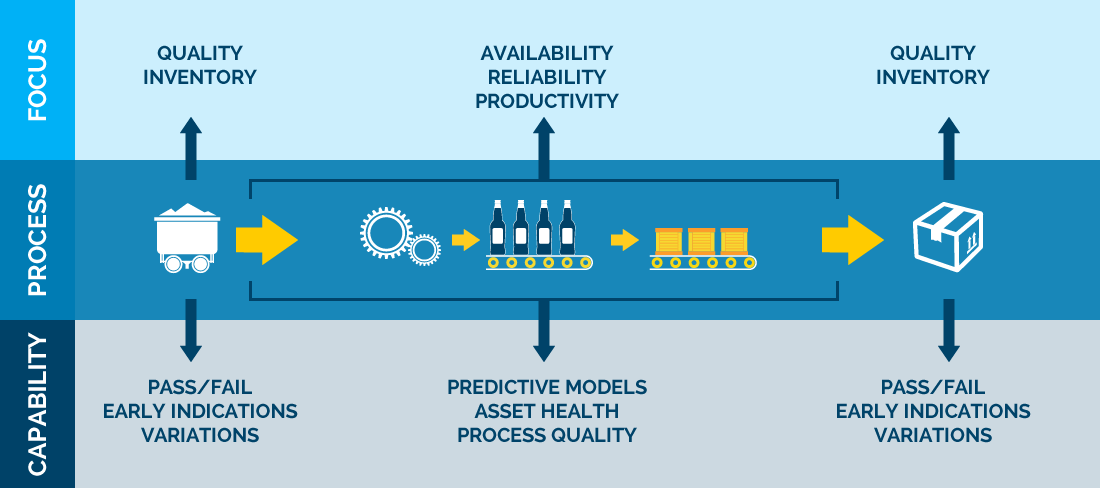
Wi-NEXT uses this illustrationto show how they help factories “maximize efficiency for production resources.”
Wi-NEXT doesn’t share their pricing plans on their website, but the assumption would be that they’re offering their software solution on a recurring billing basis.
Benefit #5: Prolongs the life of products
B2B companies can help customers prolong the life of products via proactive preventive maintenance made possible by IoT. This is also referred to as “predictive maintenance.”
Identifying preventive maintenance opportunities proactively via the multitudes of sensors collecting data is particularly helpful in reducing downtime and increasing bottom line results for B2B customers.
This is particularly important for products such as manufacturing equipment, vehicles, and farm equipment. IoT providing proactive preventive maintenance suggestions in vehicles has received generous press for B2C companies, but maintaining vehicle fleets is a huge B2B opportunity as well.
Michelin Solutions focuses on corporate fleets (yep, more than just tires) and it gathers data from sensors embedded in the fleet vehicles. The data not only allows the company to provide corporate customers with preventive maintenance information for the fleet, but also provides Michelin a recurring revenue stream. Michelin Solutions packages insights from the sensor data and customers “pay Michelin on a per-vehicle, per-year basis” for the information, explains Jerome Buvat.
Wrap-up

The incredible opportunities IoT brings to B2B companies are impressive, and IoT is a perfect fit for subscription business models. It’s exciting to see the vast spread of recurring revenue opportunities B2B IoT is creating, both for companies already utilizing a subscription business model and those able to pivot to recurring revenue as a direct result of IoT.
The post How B2B Subscription-Based IoT Businesses Are Changing The World appeared first on Chargify Blog.
Powered by WPeMatico

